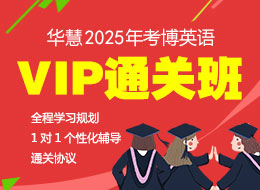Text 2
It used to be so straightforward. A team of researchers working together in the laboratory would submit the results of their research to a journal. A journal editor would then remove the authors’ names and affiliations from the paper and send it to their peers for review. Depending on the comments received, the editor would accept the paper for publication or decline it. Copyright rested with the journal publisher, and researchers seeking knowledge of the results would have to subscribe to the journal.
No longer. The Internet - and pressure from funding agencies, who are questioning why commercial publishers are making money from government-funded research by restricting access to it - is making access to scientific results a reality. The Organization for Economic Co-operation and Development (OECD) has just issued a report describing the far-reaching consequences of this. The report, by John Houghton of Victoria University in Australia and Graham Vickery of the OECD, makes heavy reading for publishers who have, so far, made handsome profits. But it goes further than that. It signals a change in what has, until now, been a key element of scientific endeavor.
The value of knowledge and the return on the public investment in research depends, in part, upon wide distribution and ready access. It is big business. In America, the core scientific publishing market is estimated at between $7 billion and $11 billion. The International Association of Scientific, Technical and Medical Publishers says that there are more than 2,000 publishers worldwide specializing in these subjects. They publish more than 1.2 million articles each year in some 16,000 journals.
This is now changing. According to the OECD report, some 75% of scholarly journals are now online. Entirely new business models are emerging; three main ones were identified by the report’s authors. There is the so-called big deal, where institutional subscribers pay for access to a collection of online journal titles through site-licensing agreements. There is open-access publishing, typically supported by asking the author (or his employer) to pay for the paper to be published. Finally, there are open-access archives, where organizations such as universities or international laboratories support institutional repositories. Other models exist that are hybrids of these three, such as delayed open-access, where journals allow only subscribers to read a paper for the first six months, before making it freely available to everyone who wishes to see it. All this could change the traditional form of the peer-review process, at least for the publication of papers.
26.In the first paragraph, the author discusses
[A] the background information of journal editing.
[B] the publication routine of laboratory reports.
[C] the relations of authors with journal publishers.
[D] the traditional process of journal publication.
27.Which of the following is true of the OECD report?
[A] It criticizes government-funded research.
[B] It introduces an effective means of publication.
[C] It upsets profit-making journal publishers.
[D] It benefits scientific research considerably.
28.According to the text, online publication is significant in that
[A] it provides an easier access to scientific results.
[B] it brings huge profits to scientific researchers.
[C] it emphasizes the crucial role of scientific knowledge.
[D] it facilitates public investment in scientific research.
29.With the open-access publishing model, the author of a paper is required to
[A] cover the cost of its publication.
[B] subscribe to the journal publishing it.
[C] allow other online journals to use it freely.
[D] complete the peer-review before submission.
30.Which of the following best summarizes the main idea of the text?
[A] The Internet is posing a threat to publishers.
[B] A new mode of publication is emerging.
[C] Authors welcome the new channel for publication.
[D] Publication is rendered easier by online service.
26.D
解析:本题对作者在第一段中论述的问题进行提问,但由于本段没有主题句,因此要通读全段才能概括出本段的中心思想。本段首句作者指出在过去,这是简单直接的( It used to be so straightforward)。显然,作者要论述的是“过去的”一种情况,而接下来作者提到了论文发表的一系列流程:研究人员将论文提交给某期刊——期刊编辑将论文交给同行评估——编辑根据评估结果决定是否发表论文,由此分析可知首段主要讲述了过去期刊出版的过程,即选项[D],其中 traditional是原文首句中 used to be的同义替换,故选项[D)为答案。
27.C
解析:从文章
本题的答案信息来源在文章的第二段。第二段说到,互联网使接触到科学结果成为一个现实。OECD刚刚发布一个报告,描写了其深远的影响。这份报告使到目前为止赢得不菲利润的很多出版商争相阅读(the report make heavy reading for publishers)。第三段说到核心科学出版市场利润巨大,第四段说到,这种情况正在改变,也是在线出版可能让他们利润下滑,所以让他们有些不安,故答案为C。
28.A
解析:从文章结构看,文章第一段重点地介绍了传统的出版方式,这种方式使科学工作者只有订购了该科学杂志才可以获得科学的结果。文章第二段介绍一种新型的出版方式——网络出版,使得科技人员容易获得科学结果。第三段谈到科学的价值和投资回报取决于杂志的发行量和易获得性。第四段具体介绍了这一新趋势的主要出版模式。从文章的中心是关于一种新的出版方式,以及它给科学杂志出版带来的影响——可以更方便的获得科学结果。中心词含有access,反应中心的是解,可以确定答案为A。
29.A
解析:从文中“there is open-access publishing,typically supported by asking the author to pay for the paper to be publish”可知答案为A。
30.B
解析:正于28题分析的,本文中心介绍了一种出版新的趋势——网络出版。B正是这一观点的高度概括,故答案为B.
以上是华慧考研网为各位小伙伴们整理的2008考研英语阅读理解Text 2真题附答案详解的内容,2021年考研已经落下帷幕,希望各位考生能在接下来的两百多天里做好充分的准备,华慧考研也会帮助大家一起解决考研英语备考中的难题,从容迎战研究生考试。考研英语线上培训班哪个好?当然选【华慧考研】!这里有海量考研真题资料、配套的考研英语辅导书,更有专门的辅导老师一对一辅导,让你研途不再迷茫!点击下方图片链接了解详情,也可联系客服,在线为您答疑~










